Campfire, a San Mateo, California based startup, emerged from stealth today announcing that it has raised $8 million in venture capital to launch an integrated hardware and software platform aimed at making remote product design and collaboration easy. The platform includes an MR headset (capable of both AR and VR), a tracking device, an accessory which turns smartphones into motion controllers, and software to connect it all together between remote users.
Campfire, headed by CEO Jay Wright, announced today that it has raised an $8 million seed investment for its remote MR collaboration system from the likes of OTV, Kli Capital, Tuesday Capital, and unspecified others.
The company is building a turnkey system for immersive collaboration which combines a headset, tracker, controller accessory, and software, with the goal of allowing teams to remotely review and discuss 3D models used in product design, architecture, and more.
The Campfire MR headset purportedly offers a 92° diagonal field of view and is convertible between AR and VR modes (presumably using a visor to block transparency for the VR mode). If the optics remind you of the Meta AR headset, you’d be right; the Campfire headset is directly based on some of the patents that were acquired when Meta ran aground back in 2019.
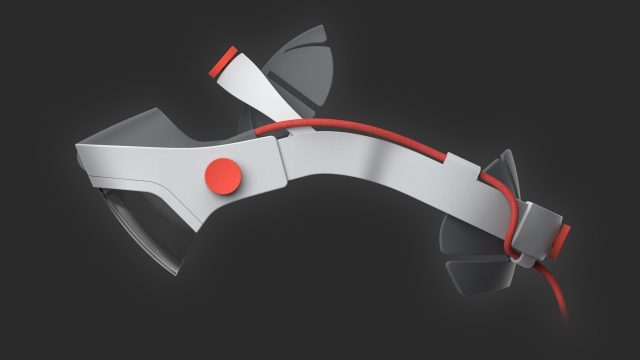 But this time around, Campfire hopes to offer more than just a headset; the company is aiming to deliver a complete immersive collaboration solution.
But this time around, Campfire hopes to offer more than just a headset; the company is aiming to deliver a complete immersive collaboration solution.
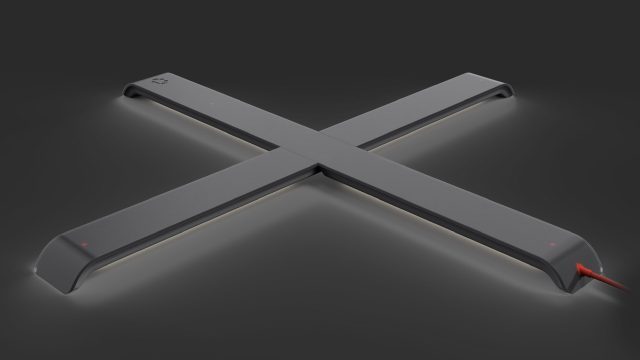 The system also includes the ‘Console’, a cross-shaped device which appears to function as both a tracker for the headset and a way to offer a centralized origin for all remote participants. It’s a simple but smart idea—if the Console is the center marker of the virtual collaboration space, all participants are anchored around a common origin, which makes it easy for everyone to feel like they’re walking around a shared space when 3D models are presented.
The system also includes the ‘Console’, a cross-shaped device which appears to function as both a tracker for the headset and a way to offer a centralized origin for all remote participants. It’s a simple but smart idea—if the Console is the center marker of the virtual collaboration space, all participants are anchored around a common origin, which makes it easy for everyone to feel like they’re walking around a shared space when 3D models are presented.
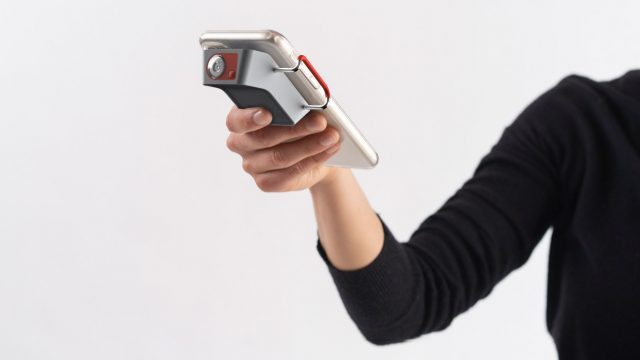 Rather than building its own motion controllers for the headset, the company is offering an accessory it calls the ‘Pack’. The accessory attaches to a smartphone, turning it into a motion controller, thanks to an integrated camera, while the screen can be used to display controls for manipulating the 3D model.
Rather than building its own motion controllers for the headset, the company is offering an accessory it calls the ‘Pack’. The accessory attaches to a smartphone, turning it into a motion controller, thanks to an integrated camera, while the screen can be used to display controls for manipulating the 3D model.
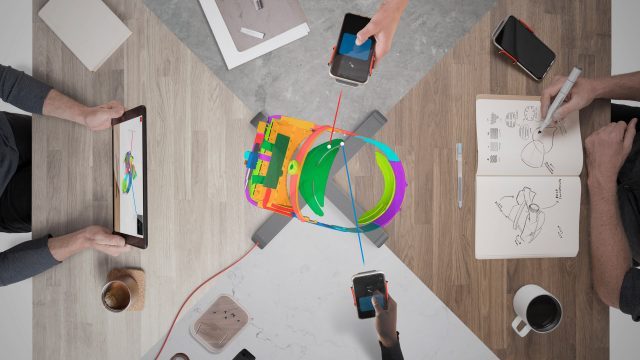 In order to truly deliver a turnkey solution, Campfire is tying it all together with software. The company says that the ‘Scenes’ software will allow users to pull in relevant 3D models for presentations; “40 leading CAD and 3D file formats” are said to be supported. Meanwhile, the ‘Viewer’ software will display those scenes to participants joining via a Campfire headset or even on a tablet or phone, allowing mixed device participants.
In order to truly deliver a turnkey solution, Campfire is tying it all together with software. The company says that the ‘Scenes’ software will allow users to pull in relevant 3D models for presentations; “40 leading CAD and 3D file formats” are said to be supported. Meanwhile, the ‘Viewer’ software will display those scenes to participants joining via a Campfire headset or even on a tablet or phone, allowing mixed device participants.
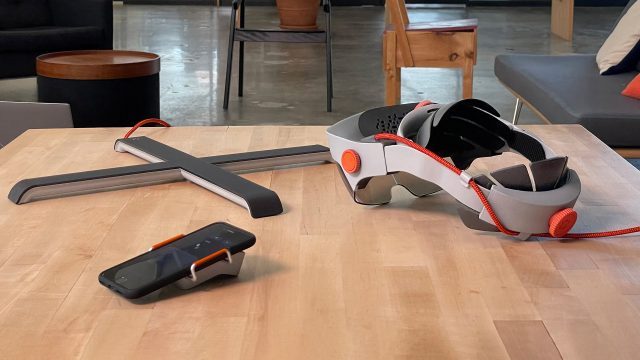 Campfire says its system will become commercially available this Fall. Pricing hasn’t been announced but the company says it will be offered on a subscription basis. ‘Early access’ is also being offered to select customers; interested parties can apply on the Campfire website.
Campfire says its system will become commercially available this Fall. Pricing hasn’t been announced but the company says it will be offered on a subscription basis. ‘Early access’ is also being offered to select customers; interested parties can apply on the Campfire website.






